Vitiligo is a skin condition characterized by patches of depigmented areas because of the loss of melanocytes. It may occur at any age and affects approximately 0.5% of people worldwide. There is no cure for vitiligo yet. However, there are several treatments available which help patients overcome their problem.
We know one such treatment as a ‘vitiligo cure in Ayurveda’.
Intense pigmentation is considered as a disease of autoimmune origin and has been linked to genetic factors. It occurs when the body attacks its own cells and causes them to lose pigmentation.
Ayurveda offers natural remedies for curing vitiligo. These remedies include herbs and other ingredients.
Vitiligo health disorders are not life threatening but it can cause serious psychological problems. Hence, it is important to treat this disorder early before it progresses into other conditions.
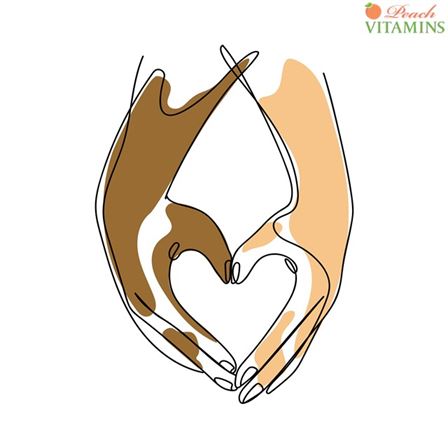
Who Gets Vitiligo?
Vitiligo is a skin condition characterized by patches of depigmented (white) skin. The cause of vitiligo is unknown. However, there are several theories regarding its causes.
Some believe that a vitiligo diagnosis is a side effect of autoimmune disorders, such as lupus. Others believe that vitiligo may be a hereditary disease based from family history. Still others believe that certain medications, including birth control pills, antidepressants, and some antibiotics, may trigger vitiligo.
Regardless of the cause, vitiligo affects approximately 1% of the population worldwide. People who experience vitiligo often suffer from depression, anxiety, and social isolation. They feel embarrassed because of their appearance and fear rejection.
There is no cure for vitiligo. But there are effective treatment options available. One aim of treatment involves applying ultraviolet light therapy to affected areas. Another treatment uses topical creams containing steroids. Yet another treatment uses oral medication, such as minocycline.
However, none of these traditional treatments work for everyone. Therefore, many patients seek alternative therapies, such as Ayurvedic medicine.
Ayurvedic medicine is based on the theory that everything in nature comprises five elements: earth, water, fire, air, and space. These elements combine to form different substances called doshas. Each person has a unique combination of dosha types. This combination determines personality traits, health conditions, and physical characteristics.
Ayurveda believes each individual has a specific dosha type. For example, those with Pitta dosha tend to be hot-tempered, passionate, and impulsive. Those with Kapha dosha are heavy and sluggish. And those with Vata dosha are restless, anxious, and forgetful.
Ayurvedic doctors treat individuals according to their dosha type. For instance, a doctor would prescribe herbs for a patient with Pitta dosha, whereas he or she would prescribe minerals for a patient with Kapha dosha.
Ayurvedics believe that vitiligo occurs when the body loses balance between the three doshas: vata, pitta, and kapha. Pigmentation disorder is considered a disease of imbalance. Ayurvedic practitioners recommend balancing the three doshas through a healthy diet, exercise, meditation, and herbal remedies.
One Ayurvedic remedy for vitiligo is known as Amla. Amla is a fruit native to India. It grows on trees and shrubs. Its name means “Indian apple.”
Amla contains vitamin C, fiber, calcium, iron, magnesium, potassium, phosphorus, and zinc. It also contains antioxidants, which help fight free radicals. Free radicals damage cells and tissues.
Free radicals are created during normal metabolism. Antioxidants neutralize them. Vitamin C helps the immune system produce antibodies against viruses and bacteria. Fiber promotes healthy digestion and regular bowel movements.
Calcium strengthens bones and teeth. Iron helps build red blood cells. Magnesium supports nerve function. Potassium regulates fluid balance in the body. Phosphorus builds powerful muscles and tissue. Zinc aids growth and development.
Amla also contains anti-inflammatory properties. Anti-inflammatories reduce swelling and pain. They’re used to relieve arthritis, gout, and rheumatism.
It can begin at any age, but in about 50% of the patients, it starts before the age of 20.[1]
Source: ncbi.nlm.nih.gov
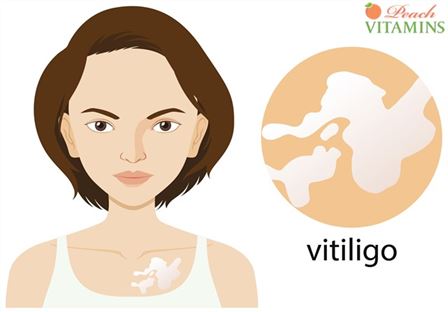
Classification of Vitiligo
Ayurveda believes that vitiligo is caused because of a deficiency in certain minerals, including iron, zinc, calcium, magnesium, selenium, copper, manganese, chromium, and phosphorus. To correct this deficiency, Ayurvedic practitioners prescribe herbal supplements containing these minerals.
Ayurvedics believe that vitiligo is associated with imbalances in the digestive system. Therefore, they recommend eating foods rich in fiber, such as fruits, vegetables, whole grains, nuts, seeds, beans, lentils, and tofu.
Ayurvedics also suggest consuming foods that boost immunity, such as garlic, ginger, turmeric, cumin, coriander, fenugreek, black pepper, cinnamon, cardamom, cloves, mustard seed, saffron, and rosemary.
Finally, Ayurvedic doctors recommend taking a daily supplement containing vitamins B6, C, E, D3, and K2. Vitamin B6 helps maintain healthy nerves and blood vessels.
It’s important to have a good supply of the ascorbic acid, which promotes healing and prevents infections. Vitamin E protects against free radicals and reduces inflammation. Vitamin D3 strengthens bones and teeth. And vitamin K2 helps prevent bleeding.
Overall, Ayurvedic medicine provides safe and effective alternatives to conventional therapies for vitiligo.
Among vitiligo patients, we found that 39.6% of patients had kapha, 39.8% pitta, 10.8% had vatha and 0.52% has tridoshaja presentation.
Source: pubmed.ncbi.nlm.nih.gov
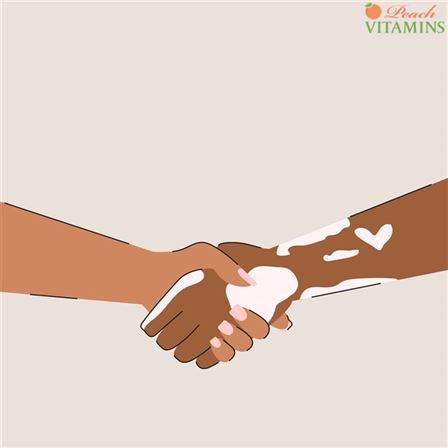
Vitiligo: How It Affects People’s Lives Psychologically
Stressful events trigger the release of hormones called corticosteroids, which stimulate melanocytes (the cells responsible for producing pigment) to produce fewer melanin pigments. This causes the skin to lose its color.
Some studies suggest that vitiligo may be triggered by psychological factors, including depression, anxiety, and obsessive-compulsive disorder. Other studies show no correlation between these conditions and vitiligo.
Regardless of whether there is a link between vitiligo and stress, many patients report feeling depressed when they develop the condition. Vitiligo can be psychologically devastating because it leaves patients with permanent disfigurement.
Not All White Spots Are Vitiligo
There are many types of white patches. Some are harmless, some require medical treatment, and others are signs of serious health problems.
White spots on the skin are called vitiligo. They’re usually harmless, but sometimes they embarrass because they appear on parts of the body where no hair grows.
Some people believe that vitiligo is contagious. This isn’t true. However, there are ways to treat vitiligo naturally. One of these methods involves applying lemon juice to the affected areas. Lemon juice contains citric acid, which helps remove dead cells from the skin.
Lemon juice may be applied directly to the skin or mixed with olive oil and rubbed onto the skin. The mixture should be massaged into the skin until it dries. Then, the mixture should be washed off with warm water.
Another method of treating vitiligo is through the use of Ayurvedic medicine. Ayurvedic medicine uses herbs and spices to help cure various ailments. One of these remedies includes turmeric. Turmeric contains curcumin, which is known for its anti-inflammatory properties.
Turmeric can be used topically or taken orally. Topical application means rubbing turmeric powder directly on the skin. Oral administration means taking turmeric capsules.
Both methods work well for curing vitiligo.
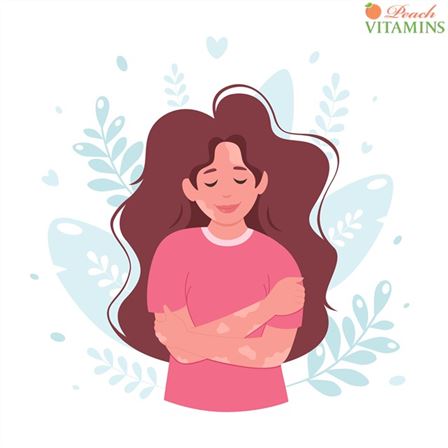
Acrofacial Vitiligo of the Skin
Acrofacial vitiligo is a type of vitiligo where the skin lesions appear on the face, lips, hands, feet, elbows, knees, buttocks, and scalp. The condition usually affects children between ages 5 and 10 years. Acrofacial vitiligos often go unnoticed until puberty when the lesions begin to spread over the body.
There is no known cure for acrofacial vitilgo. However, there are several treatments available including topical steroids, laser therapy, and surgery.
Topical steroid creams may treat mild cases of acrofacial vitiligo. Laser therapy works well for small patches of vitiligo. Surgery is reserved for severe cases of acrofacial vitiligo.
Diagnosis and Vitiligo Treatment in Ayurveda
Ayurvedic treatment of vitiligo is very effective. The main reason for this is that there are many herbs available in Ayurveda that help cure vitiligo. These herbs include amla, shatavari, kalmegh, etc.
There are various types of vitiligo treatments available in Ayurvedic medicines. Some of these medicines are used to treat the symptoms of vitiligo, whereas some others are used to cure vitiligo completely.
Some of the most common ayurvedic medicines used for treating vitiligo are –
1) Amla powder (Phyllanthus emblica): This is a herb that helps in curing vitiligo. It contains vitamin C, iron, calcium, potassium, phosphorus, magnesium, manganese, copper, zinc, and selenium.
2) Shatavari (Withania somnifera): This is another herb that is used for curing this skin disorder. Its active ingredient is withanolide. Improving blood circulation and metabolism is what it does. It also improves immunity and reduces inflammation. Reducing stress and anxiety is something it is helpful at. It is also known to improve skin tone and texture.
3) Kalmegh (Andrographis paniculata): This is yet another herb that is used in ayurvedic medicine for curing vitiligo and other skin problems. It is rich in antioxidants and anti-inflammatory properties. Burns and wounds can also be healed with it. It is also beneficial for hair growth. In addition to reducing swelling and pain, it also has anti-inflammatory properties.
4) Triphala (Trivritaka): This is a combination of three herbs namely Haritaki, Amalaki and Bibhitaki. They are used for curing discolored patches. The properties they contain are anti-oxidants. They are also known to be effective in removing toxins from the body. Additionally, they are known for purifying the blood.
5) Ashwagandha (Withania somnifersa): This is another herbal remedy that is used for curing different diseases, including vitiligo. It is also known by the name ‘Indian ginseng’ and ‘winter cherry’. It is also known to boost energy and endurance.
6) Brahmi (Bacopa monnieri): This herb is used for curing vitiligo. Memory and concentration have been improved by using it. It is also known in ayurveda for its ability to increase brain activity. Mental decline can also be prevented by it.
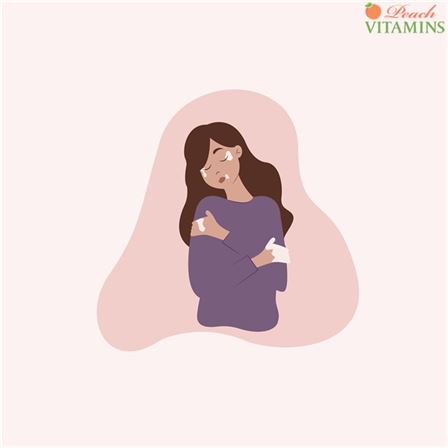
Which Treatment Is Best For Vitiligo Homeopathy Or Ayurveda?
Ayurvedic medicine is based on the concept of balance between three doshas (vata, pitta, kapha) and the body’s five elements (earth, water, fire, air, space). The natural treatment plan includes diet, lifestyle modifications, herbs, oils, and therapies.
Homeopathic medicines help restore the natural balance of the body. They are safe, effective, and affordable.
Homeopathy works by stimulating the immune system to heal itself. This process involves the use of small doses of substances that cause similar symptoms when taken at large doses.
Homeopathy uses the principle of “like cures like”. It treats the disease by administering minute amounts of the substance that causes the same symptoms in healthy individuals.
Homeopathy is used to treat many diseases, including the loss of pigmentation.
Homeopathy is not only useful for treating irregular patches of skin; it is also helpful for other skin conditions such as psoriasis, eczema, dermatitis, acne, etc.
There are several types of homeopathy treatments available for vitiligo. Some of them include:
• Herbal treatments
• Mustard Oils
• Cryotherapy
• Light therapy
• Laser therapy
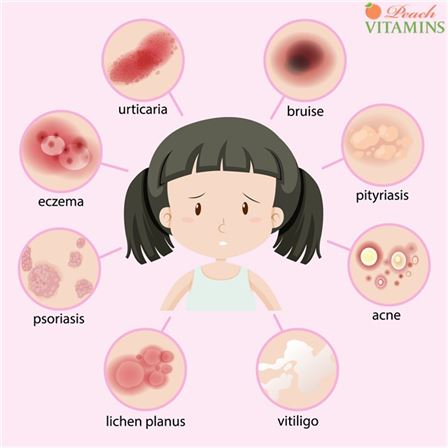
Does Yoga Cure Vitiligo?
Yoga is a great way to relax and unwind after a long day at work. But did you know yoga can be used to treat vitiligo too?
If you suffer from vitiligo, you may not realize that there are several ways to help ease the symptoms. One of these methods involves practicing yoga.
Many people who practice yoga report feeling calmer and happier. And some say that yoga helps them cope better with stress. So if you’re looking for a natural remedy for vitiligo, consider adding yoga to your routine.
Here are three reasons yoga can help cure vitiligo:
1) Yoga increases blood flow to the skin. This makes it easier for the body to heal itself.
2) Yoga reduces stress. Stress causes inflammation, which leads to more spots appearing on the skin.
3) Yoga improves posture. Poor posture can cause muscle tension and trigger migraines. These headaches often lead to spots appearing on the skin because the brain signals the skin to produce melanin.
So next time you feel stressed out, try taking a relaxing yoga class. You won’t regret it!
Vitiligo Cure in Ayurveda: Final Thoughts
Exploring a vitiligo cure in Ayurveda is one of the best options for anyone suffering from this condition. There are several natural remedies that can help improve your health and wellbeing.
You can find all sorts of information about vitiligo online. However, it’s important to remember that no single method will work for everyone.
The key is finding the vitiligo treatment that works best for you. Schedule a free consultation with Ayurvedic practitioner Cosmic Mike to learn more about imbalanced body energies today!
